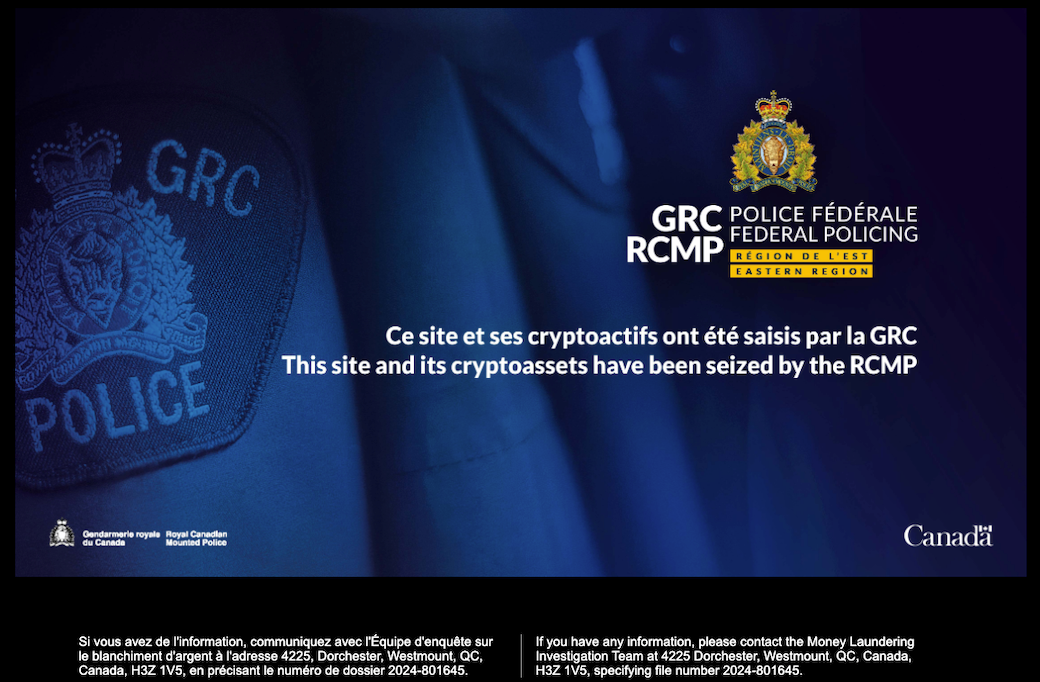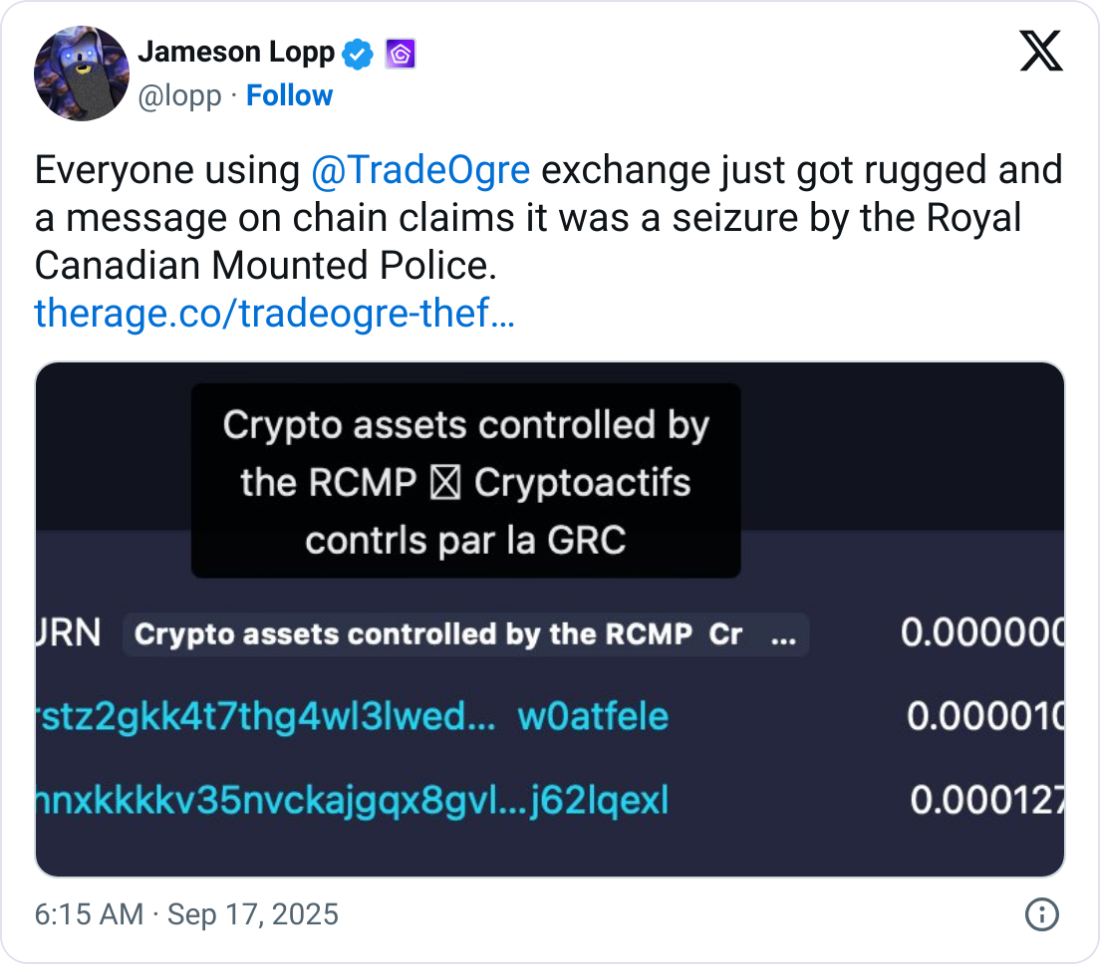TradeOgre seizure: the RCMP seized CA$56 million (≈US$40.6M) from TradeOgre, calling it Canada’s largest cryptocurrency seizure. The action targets a non‑KYC exchange alleged to have enabled money laundering; investigations and asset-claim processes are ongoing for affected users.
-
RCMP seized CA$56M from TradeOgre
-
Seizure followed a Europol tip; RCMP alleges non‑registration with FINTRAC and money‑laundering use.
-
Asset recovery may be lengthy and legally complex, requiring extensive on‑chain and off‑chain evidence.
TradeOgre seizure: RCMP seizes CA$56M from TradeOgre non‑KYC exchange; discover implications and how affected users can pursue claims.
Canadian authorities say they have seized CA$56 million in cryptocurrency from the TradeOgre exchange; users and privacy advocates dispute the move and warn of complex recovery procedures for legitimate account holders.
What is the TradeOgre seizure and why does it matter?
The TradeOgre seizure refers to the Royal Canadian Mounted Police (RCMP) operation that confiscated over CA$56 million from the TradeOgre centralized exchange. The RCMP says the platform failed to register with Canada’s financial intelligence regulator and was allegedly used for money laundering, prompting the takedown and forensic analysis.
TradeOgre, known for listing niche and privacy‑focused tokens, operated with minimal Know Your Customer (KYC) controls. That model attracted privacy advocates and critics alike and now raises questions about custody, user rights, and regulatory enforcement.
How did the RCMP carry out the seizure?
RCMP investigators initiated inquiries in June 2024 after receiving a tip from Europol, the agency announced. They executed a seizure that the RCMP described as the largest cryptocurrency seizure in Canadian history and are now analyzing transaction records from the platform.

Why are users and privacy advocates pushing back?
Many TradeOgre users argue that using a non‑KYC exchange is not itself a crime and that legitimate users are being penalized for platform design choices. Security experts and platform supporters have publicly demanded transparency and a clear path for innocent users to reclaim assets.
Notable voices in the privacy and crypto community have called for the RCMP to publish evidence and to provide a fair, accessible reclamation process for users who can prove lawful ownership.
How can affected users seek to recover seized assets?
Asset recovery after a law enforcement seizure typically requires a formal claims process. Expect strict deadlines, documentary requirements, and procedural complexity similar to past cases, where claimants had to submit both on‑chain proof and off‑chain documentation.
The burden of proof may include transaction histories, wallet signatures, and any account correspondence. Governments often value assets at seizure time, which can limit compensation if prices later rise.

What are the legal and practical obstacles to reclaiming funds?
Legal processes after seizures are often lengthy and procedurally complex. Claimants must meet strict evidentiary standards and adhere to deadlines. Governments commonly treat seized crypto at the value on the seizure date, which can disadvantage claimants if values rise later.
Experts warn that small errors in filings or incomplete evidence can lead to claim denial. Affected users should prepare comprehensive records and consider legal assistance.
Frequently Asked Questions
How long will the RCMP investigation take?
The RCMP has said the investigation is ongoing. Duration depends on forensic analysis complexity and potential legal proceedings; such probes can span months or longer.
What proof will authorities require to reclaim funds?
Authorities typically request detailed transaction records, wallet keys or signatures, and supporting off‑chain documents. Claimants should maintain comprehensive, verifiable evidence of ownership.
Key Takeaways
- Seizure scale: RCMP reports CA$56M seized from TradeOgre, calling it a landmark operation.
- User impact: Many legitimate users may face lengthy, documentation‑heavy recovery processes.
- Regulatory signal: The case highlights enforcement risk for non‑KYC platforms and the tension between privacy and compliance.
Conclusion
The TradeOgre seizure underscores the regulatory risks facing non‑KYC exchanges and leaves many users navigating a difficult asset recovery path. COINOTAG will continue to monitor updates and provide guidance for affected users as investigators and courts clarify next steps.





